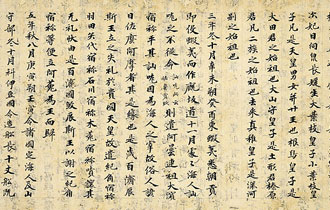Pages |
After the fall of Nanjing, Japanese soldiers carried out one of the most brutal atrocities in the history of warfare. In January of 1938, Japanese soldiers conducted an orgy of looting, arson, rape, torture, and murder, in which between 42,000 and 400,000 people were killed, and many, many more were maimed or otherwise wounded. The Rape of Nanjing, as this incident has been named, is a highly contentious aspect of Chinese, Japanese, and other nations' memory of World War II even today, and the wide discrepancy in the number of dead (low in the accounting of some Japanese writers, high in that of other Japanese and most Chinese ones) is an indication of the fervor of the debate both within Japan and internationally. But whether the number of dead is "merely" 42,000 or much higher, there is no doubt that a large number of people suffered horribly in Nanjing in the winter of 1937-1938. Similar atrocities occurred in other parts of China on a smaller scale throughout the years of the invasion.
While the magnitude of the Rape of Nanjing is controversial, the reasons for its occurrence are also contested. While some argue that the Japanese commanders ordered the orgy to weaken Chinese resistance to the invasion (General Matsui Iwane, the commander in Nanjing in 1937-1938, was tried at the Tokyo War Crimes Tribunals, found guilty, and executed in 1948), there is no direct evidence to support this conclusion. Written orders to rape, loot, and murder have not been found. Other interpretations are as follows: the Japanese soldiers, led to believe they would easily conquer China, were frustrated by the slowness of their advance, and took it out on the citizens of China's capital. The atrocities represented a kind of transfer of aggression; Japanese peasant-soldiers, brutalized by their own landlords and officers, took out their frustrations on the Chinese. Japanese soldiers, endlessly bombarded with the idea that they, the subjects of a divine emperor, were by nature superior to Chinese, looked on their enemy as less than human and thus easy to treat bestially.
Japan's Control of China
The Japanese, despite occasional setbacks or slowdowns, had conquered most of northern and eastern China by autumn of 1938. The last urban centers, Wuhan, up the Yangtze River from Nanjing, and Guangzhou, near Hong Kong, fell to the Japanese in October 1938. The Nationalist government moved its capital to Chongqing, one thousand miles west of Shanghai and Nanjing, safely outside the Japanese area of conquest, but also far from the center of the war of resistance against the aggressors. Moreover, with Shanghai and Guangzhou, China's major treaty ports gone, the Chinese government's only contact with the United States and Great Britain was through Southeast Asia. When the Japanese took Hainan Island, close to the coast of Indochina, in February 1939, China was even more isolated from its potential allies.
By the end of 1938, Japan seemed to have all of northern and central and much of southern China under its control, at least on the map. But from then until the end of the war in the summer of 1945, the Japanese were never able to control China completely. The Japanese army had miscalculated: it had taken on a war it did not have the capability to win. While the Japanese army was better equipped and trained than the Chinese, it was never large enough to control a country the size of China; an army of one million soldiers at its peak could not control a country of three hundred million, especially as the Japanese atrocities, many of them conducted as counterinsurgency operations, transformed Chinese peasants into Chinese nationalists. Guerrilla warfare tactics, a la Zhu De, prevented the Japanese from controlling China.
Pages |











